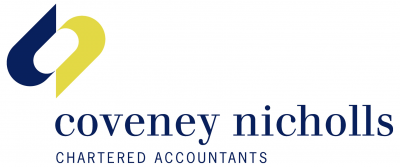In our year-end tax advice, we often recommend clients make sure they’ve made as many contributions to their pension as possible to claim the pension relief they’re entitled to.
In this blog, we’ll tell you everything you need to know about tax relief on pension contributions so you can enjoy the retirement you deserve. Read on to find out more.
What is pension tax relief?
To encourage people to save money for their retirement, the Government is willing to pay tax relief on pension contributions, essentially adding free money to your pension pot.
You can get tax relief at the highest rate of income tax you pay. So, if you’re a basic rate payer, you’ll get 20% tax relief. In practice, that means that every £1 contribution you make automatically becomes £1.25 because £1.25 taxed at 20% is £1.
If you live in Scotland and pay the Scottish start rate of 19%, you can still get tax relief on your pension contributions at 20% and not be expected to pay the difference.
Higher and additional rate taxpayers get tax relief at 40% (every £1 becomes £1.66) and 45% (every £1 becomes £1.82).
However, depending on how your pension scheme works, if you don’t pay tax you might not get tax relief.
How does pension tax relief work?
There are two ways you can get tax relief on your pension contributions, known as relief at source and net pay.
If you’re in a workplace pension, your employer chooses which method is used, but if you’re in a personal pension, the relief at source method is always used.
Relief at source
With relief at source, your contributions receive a boost from the Government based on your income tax band.
Here’s how it works:
- Your employer deducts tax from your taxable UK earnings as usual.
- They then deduct your pension contribution from after-tax pay and send this to your pension provider. If you’re self-employed, you would make a contribution from your taxable UK earnings directly to the pension provider.
- Your pension provider then claims 20% in tax relief directly from the Government and adds it to your pension pot.
This way can be better for people who don’t pay tax, as they still get tax relief.
However, under this arrangement, people who pay higher rates of tax than 20%, whether employed or self-employed, have to claim the extra tax relief through their tax return or directly from HMRC.
Net pay
With net pay, your pension contributions are made before you are taxed. You will usually pay less tax as a result because your tax will be calculated based on a lower amount of UK earnings.
Here’s how it works in more detail:
- Your employer deducts your pension contribution from your pay before tax is deducted.
- You then pay tax on your UK earnings minus your pension contribution, meaning you get more take-home pay.
- Although you’ve paid the full amount of your pension contribution yourself, the tax relief comes in the way of you paying less tax.
With this method, you get the full tax relief without having to claim it – regardless of the rate of tax you pay. However, if you don’t pay tax, this method means you won’t get any tax relief.
Limits of tax relief for pension contributions
There is no limit on the amount you can save in a pension each year, but there are limitations on the tax relief you can get.
First, any contributions you make must be equal to or less than your relevant UK earnings for the tax year in which they are made – so if you earn £20,000 but put £25,000 away, you only get tax relief on £20,000.
However, you have an annual allowance of £40,000, so if you make £60,000 and want to put that much away, you’ll only get tax relief on the first £40,000.
Then, for every £2 above £240,000 you earn, your annual allowance reduces by £1. This ‘tapering’ stops at £312,000, so everyone will always have an allowance of at least £4,000.
Finally, there is your lifetime allowance, which is currently £1,073,000. This is the total amount you can build up in all your pension savings without incurring a tax change.
If you need advice on saving for your pension, feel free to get in touch with us.

